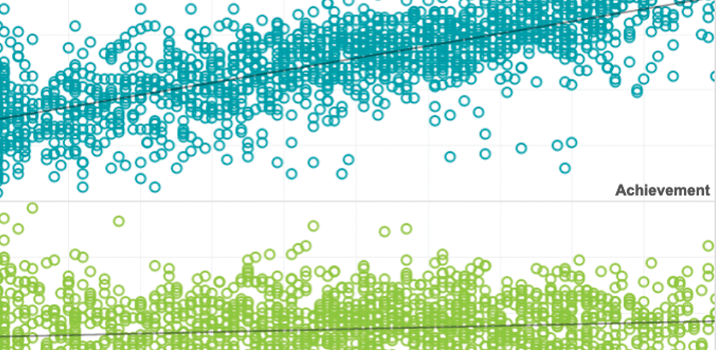Data visualization
MAP Growth Goal Explorer
2020
By: Dave Moyer

Description
The MAP Growth Goal Explorer is designed to support and simplify the goal-setting process by showing a range of possible fall-to-spring growth goals against the backdrop of important academic benchmarks. This tool is intended to help teachers, families, and students work together to establish goals that strike a balance between what is meaningful and what is realistic.
See MoreAssociated Research

White paper
Related Topics


Moving from data to making a difference
The problems faced within education resemble the problems in many social settings in that they lack clear definitions, have many potential causes, lack simple solutions, and defy straightforward measurement. In this article, Andrew Hegedus shares a view on the types of problems faced in education and outlines key characteristics of a process that begins with collecting data and ends with evaluating progress.
By: Andrew Hegedus
Topics: Empowering educators, High school, High-growth schools & practices


Using test scores for teacher evaluation: Why caution is necessary
This article offers insight and guidance on issues to think about before tests are used as an evaluation tool and to help ensure better choices are made about the role test scores play in a teacher’s evaluation.
Topics: Empowering educators, Student growth & accountability policies


Developing more meaningful definitions of college readiness
Complementing traditional quantitative measures with more qualitative tools can help determine college and career readiness.
By: John Cronin, Michael Dahlin


Making teacher goal setting more powerful
Most of us believe that when individuals have goals, their performance improves, and this belief is being put to the test in schools today. In an effort to create alignment between district and school improvement efforts, teachers are more likely than ever to have formal performance goals.
By: Andrew Hegedus
Topics: Empowering educators, High-growth schools & practices


The potential of adaptive assessment
In this article, the authors explain how CAT provides a more precise, accurate picture of the achievement levels of both low-achieving and high-achieving students by adjusting questions as the testing goes along. The immediate, informative test results enable teachers to differentiate instruction to meet individual students’ current academic needs.
By: Edward Freeman
Topics: Innovations in reporting & assessment, Measurement & scaling, Student growth & accountability policies


The utility of adaptive testing in addressing the problem of unmotivated examinees
This integrative review examines the motivational benefits of computerized adaptive tests (CATs), and demonstrates that they can have important advantages over conventional tests in both identifying instances when examinees are exhibiting low effort, and effectively addressing the validity threat posed by unmotivated examinees.
By: Steven Wise
Topics: Measurement & scaling, Innovations in reporting & assessment, School & test engagement


Is Moneyball the next big thing in education?
Predictive analytics in education can offer a benefit as long as educators heed the differences between how the tools are used in industry and how they should be used differently in schooling. Perhaps most important, teachers already know a great deal about their students — far more than an investor knows about a stock or a baseball scout about an up-and-coming pitcher.
By: James Soland


